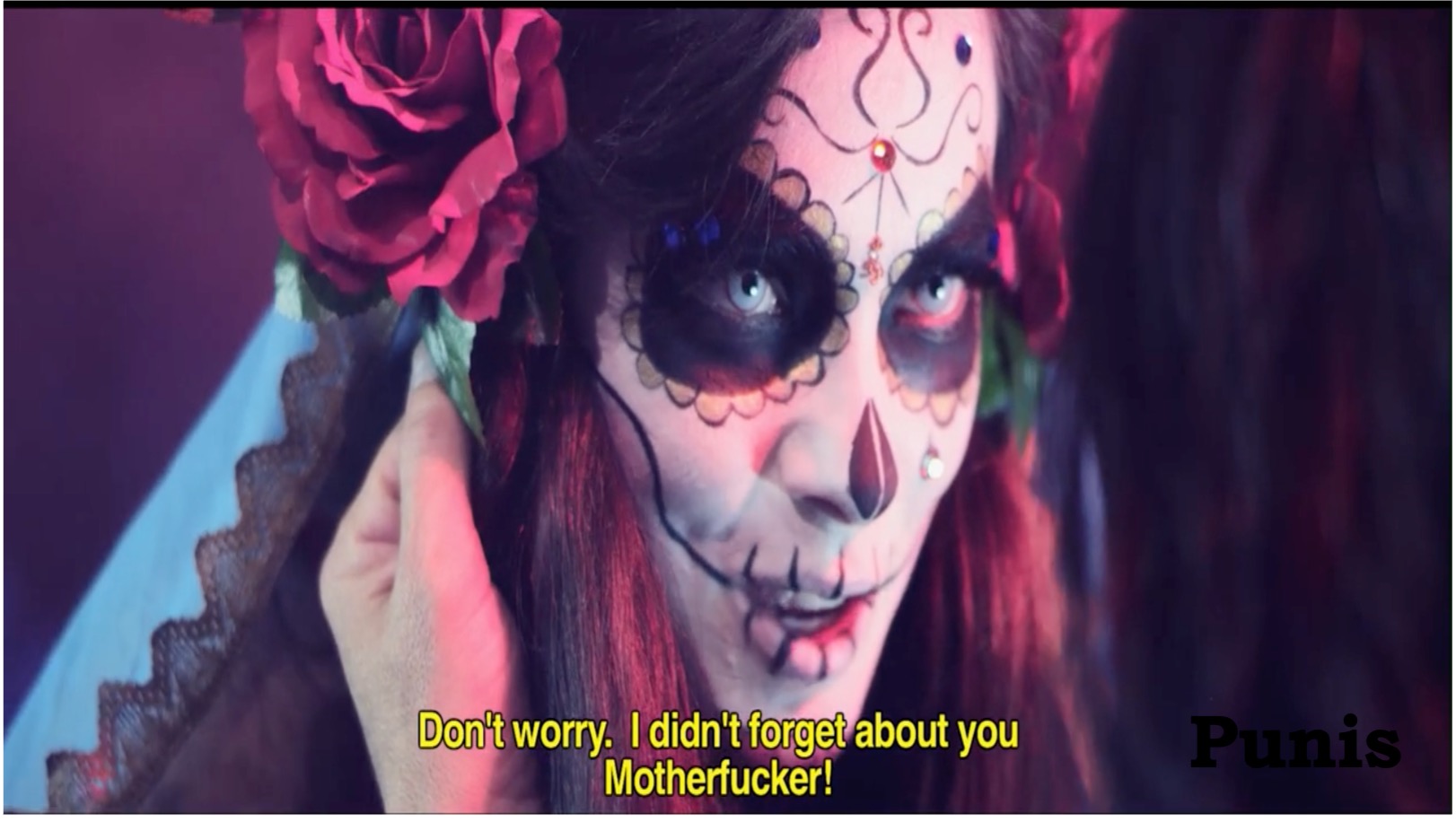Tecmerin. Journal of Audiovisual Essays
FROM THE ARCHIVE
Issue 14 – 2024 (2)
Doing Women’s Global Horror Film History
Valeria Villegas Lindvall
Doing Women’s Global Horror Film History (DWGHFH) showcases the possibilities of horror film history to constitute a feminist archive. Edited by Professor Alison Peirse, this open-access, peer-reviewed special dossier in MAI: Feminism & Visual Culture explores the pertinence of audiovisual critique as a tool to relay a comprehensive, feminist history of horror film. This dossier constitutes a fundamental part of the Arts and Humanities Research Council (AHRC)-funded project Feminist Horror Cinema, led by Peirse. Importantly, the vast exploration performed across DWGHFH takes after the labor undertaken by Peirse’s edited volume Women Make Horror: Filmmaking, Feminism and Genre (2020), to which I collaborated by writing on authorship, feminism, and decolonial critique of Mexican national imaginaries in Gigi Saúl Guerrero’s transnational horror filmmaking.

Still from Día de los Muertos (short film, dir. Gigi Saúl Guerrero, 2013).
I feature an analysis of this piece in my contribution for WMH.
As Peirse notes (2024), alongside WMH’s publication, 2020 marked the release of Alexandra Heller-Nicholas’ 1000 Women in Horror, 1895-2018 and Patricia Pisters’ New Blood in Contemporary Cinema: Women Directors and the Poetics of Horror. Building on feminist horror legacy of 2020, DWGHFH proposes audiovisual critique as a means to further democratize scholarship. It collects 30 video essays that address the involvement of women at all levels of production and across diverse visual cultures from over 20 different countries. These pieces contribute to the demystification of horror visual culture history as dominated by men, demonstrating that women, as Peirse (2020, 1-23) aptly notes in her introduction to WMH, have been writing, producing, directing, shooting, editing, analyzing, distributing and even providing innumerable showcases for horror film through specialized festivals. DWGHFH is a collective feminist effort that aims to decenter the patriarchal construction of knowledge regarding horror visual culture while upsetting the consideration of Global Northern productions as indisputable points of reference. As a result, the video essay as a form of academic critique underlines the potentialities of horror visual culture as feminist, even liberatory, worldmaking (Peirse 2024).
All the contributors to DWGHFH were asked to provide a response to Christine Gledhill and Julia Knight’s feminist proposition to revisit and reframe film history (2015). In order to provide this response, all contributors partook in workshops and masterclasses. These curbed the hierarchical transmission of knowledge to instead bet on the organic co-authorship of teaching and learning (in itself, a political stance in collectivity). Miriam Kent’s technical know-how and Tanya Vital’s voice-over expertise, alongside Catherine Grant’s, Neepa Majumdar’s, and Dayna McLeod’s guidance towards videographic critique, were fundamental to encourage collective, horizontal thinking and learning. Regardless of technical proficiency, the contributors were also grouped by their cultural and geographical kinships, which allowed peer learning to become a reality across continents.
My video essay responds to the initial prompt by approaching the short films of Mexican director Michelle Garza Cervera to provide insight on her authorial signature, which I posit investigates the ways in which the female body is outraged, intervened, and reified to the service of patriarchal gazes to then provide instances in which practical and discursive violence are confronted by the women in their clutches. The piece, titled She wants revenge. Michelle Garza’s scalpel-sharp filmmaking, explores three short films: La Otra Mitad (2010), Vitriol (2017), and The Original (2018). In order to arrive to the final video essay, we were invited to think through the crafting of videographic discourse with different exercises. These provided a means to think alternatively to the often staunching dryness of written scholarship: as an author with a penchant for wordiness, this exhortation towards the visual was methodologically challenging and rewarding. The first exercise was a pecha kucha, which is a mode of presentation that challenges the expositor to introduce information in a condensed fashion, most commonly in a format of 20 slides of 20 seconds each. This practice of concise exposition allowed me to toy with Vitriol and create new pathways of correlation by showing instead of telling.
The pecha kucha opened the door to the immense possibilities of juxtaposition and resignification of existing film material and provided a sturdy foundation for a voice-over exercise. In this instance, I chose a clip from The Original that displays the helplessness of Garza’s characters as imposed by patriarchal policing of their bodies and paired it with an excerpt from Jenny Hval’s feminist novel Girls against God (2020). The exercise aims to subvert the helplessness depicted by the detached, cold medical gaze of the clip with a passage that impresses the feminist fury that forced hopelessness can beget.
These exercises illuminated my understanding about academic critique in relation to innovation and multimedia thinking. Consequently, the final video essay reflects the ways in which image and sound provide promising raw materials for artistic research methods. Therefore, the video essay is highlighted as a generous, flexible, and bold exercise of critical thought with great potential for democratization ––and most importantly, as a feminist gesture that, from the ground up, can further the inquisitive spirit of scholars and audiences to intently listen to Film History’s silences.
Bibliography
Gledhill, C. & Knight, J. (eds.) (2015), Doing Women’s Film History: Reframing Cinemas, Past and Future. University of Illinois Press.
Heller-Nicholas, A. (2020), 1000 Women in Horror, 1895-2018. BearManor Media.
Peirse, A. (2024) Introduction: Feminist worldmaking and horror film, in Doing Women’s Global Horror Film History, MAI: Feminism & Visual Culture 13.
Peirse, A. (Ed.) (2020) Women Make Horror: Filmmaking, Feminism, Genre. Rutgers University Press.
Pisters, P. (2020) New Blood in Contemporary Cinema: Women Directors and the Poetics of Horror. Edinburgh University Press.
Tecmerin. Revista de Ensayos Audiovisuales
ISSN: 2659-4269
© Grupo de Investigación Tecmerin
Universidad Carlos III de Madrid




